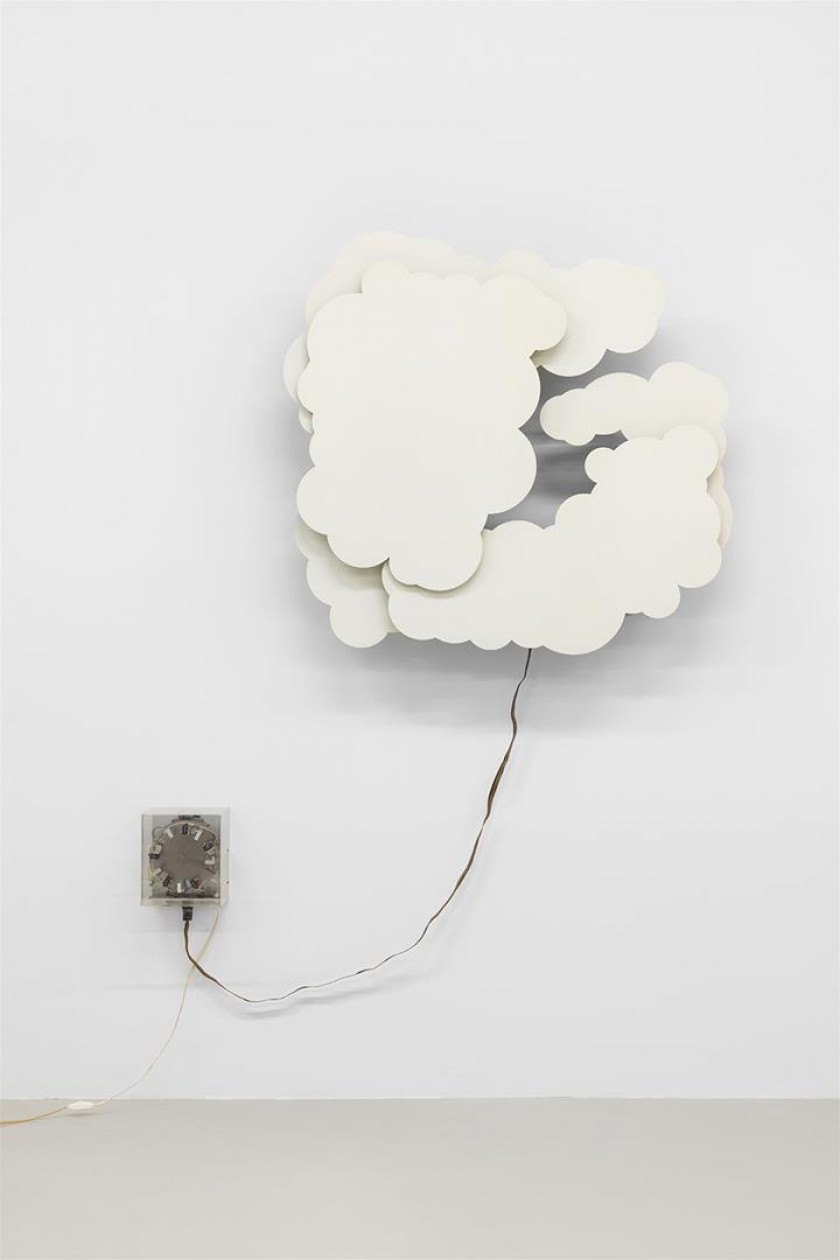Nuvem de Superfície Variável [Variable Surface Cloud]
sculpture


1971
Painted aluminium, random programmer and motor
94 x 99,5 x 19,5 cm (nuvem); 20 x 17,8 x 14 cm (motor)
Between 1966 and 1967 appear René Bertholo’s first Reduced Models, mechanical sculptural objects that formally resemble various of the figurative symbols present in his painting works, animated in subtle and extended movements. Nuvem de Superfície Variável, 1971, belonging to that body of kinetic objects, formally resembles the image representation of a cloud and simulates its uncertain movement, its layers and superpositions as well as its changing outlines. Very simplified in their drawing, the shapes are cut in metal and then painted white, plane and bright and the engine that provides movement, visible to the spectator, is also part of the installation. The remarkable mechanism used in the sculpture, a randomness programmer, an absolute innovation in Portuguese modern art, activates the dislocation of the object from the action of a sphere which, by circulating inside a metallic cylinder in rotation, pressures one of the electronic devices that ordain the motion of the white metallic plates, that constitute the various layers of the cloud. Thus, its continuous slow dislocation prefigures a playful and potentially dreamlike action, associated to the imagination and the ethereal. The spectator witnesses the development of the operation through time, the randomness of the movement and, in this way, Nuvem de Superfície Variável reveals and exposes the notions of chance and automation, in the suggestion of a perpetual movement which refers to the concept of entropy, related to the attempt to build machines capable of perpetual operation.
Following the development of these movement experiments, Bertholo left for Berlin in 1972 where, during one year, he dedicated himself to the studies of electronics applied to art, at the Deutscher Akademischer Austauschdienst.
![Un jour de grève ou la lampe d'Aladin [Um dia de greve ou a lâmpada de Aladino]](https://cms.macam.pt/storage/uploads/thumbs/inarte-work-3280_w840.jpg)